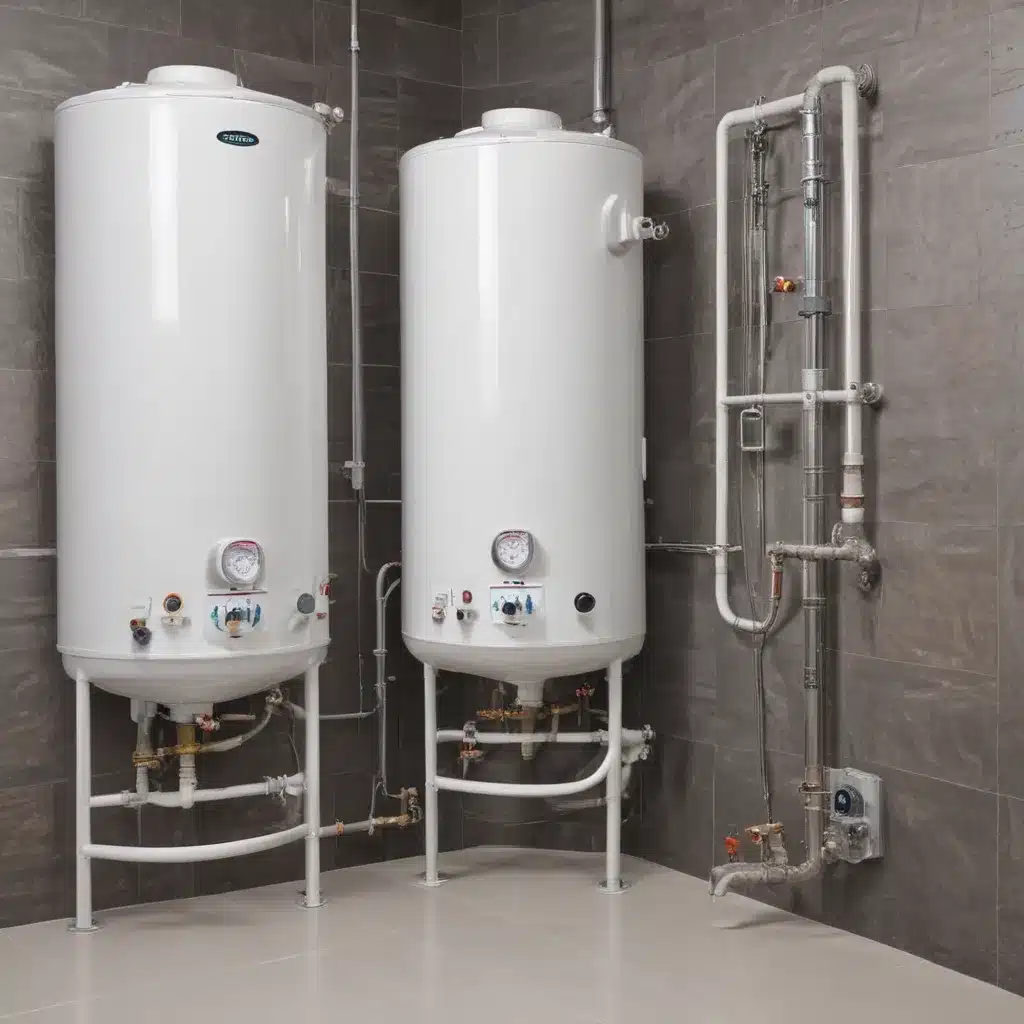
Maintaining optimal thermal efficiency in hot water cylinder installations is crucial for reducing energy consumption, minimising operational costs, and ensuring long-term sustainability. In our 15 years installing… As an experienced plumbing consultant, I’ll walk you through the key considerations, innovative design strategies, and best practices to maximise the thermal performance of your hot water system.
Thermal Efficiency Considerations
Achieving superior thermal efficiency in hot water cylinder installations involves carefully examining the insulation properties, heat loss mechanisms, and thermal conductivity of the system components. Let’s dive into these crucial factors.
Insulation Properties
The quality and thickness of the insulation surrounding the hot water cylinder play a pivotal role in minimising heat loss. High-performance insulation materials, such as rigid foam panels or vacuum-insulated jackets, can dramatically reduce the rate of heat transfer through the cylinder’s walls. Ensuring proper insulation coverage, including the top, sides, and any exposed pipework, is essential for maintaining optimal thermal efficiency.
Heat Loss Mechanisms
In addition to conductive heat loss through the cylinder walls, other heat loss mechanisms might want to be addressed. Convective heat loss occurs when warm air circulates around the cylinder, while radiative heat loss can occur if the cylinder’s surface is not properly shielded. Carefully positioning the cylinder, utilising effective air circulation, and incorporating reflective surfaces can help mitigate these heat loss pathways.
Thermal Conductivity
The materials used in the hot water cylinder’s construction directly impact its thermal efficiency. Stainless steel and copper are renowned for their superior thermal conductivity, allowing for efficient heat transfer from the heating source to the water. Conversely, materials with lower thermal conductivity, such as plastic or low-grade steel, can significantly reduce the system’s overall efficiency.
System Components
The design and integration of the key system components, including the water heater, piping configuration, and expansion vessel, are crucial for achieving optimal thermal performance.
Water Heater Design
The selection of the appropriate water heater, whether it’s a traditional tank-style or a more innovative tankless (or “combi”) model, can have a significant impact on thermal efficiency. High-efficiency combustion boilers, heat pump water heaters, and solar-assisted systems are all examples of thermally efficient water heating technologies that should be carefully considered.
Piping Configuration
The configuration and routing of the hot water distribution piping can also influence thermal efficiency. Minimising pipe runs, using insulated pipework, and optimising pipe diameters can all help reduce heat loss and improve overall system performance.
Expansion Vessel Integration
The expansion vessel, which accommodates the changes in water volume as it heats and cools, is an often overlooked component that can impact thermal efficiency. Ensuring the expansion vessel is properly sized, positioned, and integrated into the system can prevent unnecessary heat loss and maintain optimal system pressure.
Hydraulic Performance
Achieving optimal thermal efficiency also requires a thorough understanding of the system’s hydraulic performance, including water pressure dynamics, pipe sizing, and flow rate optimization.
Water Pressure Dynamics
Maintaining the appropriate water pressure throughout the system is crucial for efficient heat transfer and minimising the risk of leaks or damage. Proper pressure regulation, pressure-reducing valves, and expansion tanks can all contribute to optimising the system’s hydraulic performance.
Pipe Sizing Optimization
Selecting the appropriate pipe diameters for hot water distribution is essential for minimising friction losses and ensuring adequate flow rates. Oversized pipes can lead to poor water velocity and reduced heat transfer, while undersized pipes can result in excessive pressure drops and reduced overall efficiency.
Flow Rate Optimization
Balancing the flow rates within the hot water system is key to maximising thermal efficiency. Adjustable valves and flow-balancing devices can be used to double-check that each outlet receives the appropriate volume of hot water, preventing any areas from being starved of heat or experiencing excessive flow.
Regulatory Compliance
When designing and installing hot water cylinder systems, it’s essential to double-check that compliance with the relevant building regulations, energy efficiency standards, and industry-specific installation guidelines.
Building Regulations
In the UK, Part G of the Building Regulations outlines the requirements for the design, installation, and commissioning of hot water systems. Adherence to these regulations is mandatory and ensures the safety, efficiency, and sustainability of the installation.
Energy Efficiency Standards
Alongside the Building Regulations, energy efficiency standards, such as the Energy-related Products (ErP) Directive, provide guidelines for selecting high-performance components that minimise energy consumption and greenhouse gas emissions.
Installation Guidelines
Industry bodies, such as the Chartered Institute of Plumbing and Heating Engineering (CIPHE), publish detailed installation guidelines that cover best practices for hot water cylinder systems. Familiarising yourself with these guidelines can help double-check that the thermal efficiency and long-term reliability of the installation.
Installation Optimization Strategies
To further enhance the thermal efficiency of hot water cylinder installations, consider the following optimisation strategies:
Placement and Positioning
The location and positioning of the hot water cylinder can have a significant impact on its thermal performance. Placing the cylinder in a centralized, well-insulated space, with adequate clearance for maintenance and airflow, can help minimise heat loss and improve accessibility.
Drainage and Ventilation
Proper drainage and ventilation are essential for the long-term operation and efficiency of the hot water cylinder. Ensuring efficient condensate drainage and adequate air venting can prevent issues such as waterlogging, corrosion, and air pockets that can compromise the system’s thermal performance.
Commissioning and Maintenance
Thorough commissioning and regular maintenance are crucial for maintaining the thermal efficiency of the hot water cylinder installation. Start-up procedures, periodic inspections, and proactive maintenance can help identify and address any issues that may arise, ensuring the system continues to operate at its peak performance.
By carefully considering these thermal efficiency factors, optimising the system components, and adhering to regulatory guidelines, you can double-check that your hot water cylinder installation delivers exceptional energy savings and long-term performance. For more information or assistance, please visit plumbingdrainsnorthwales.co.uk.

